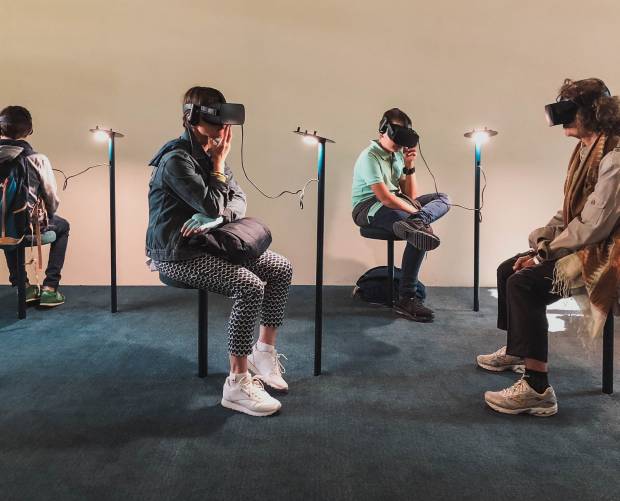In the first half of our interview with ROK Entertainment Group Marketing
Director Bruce Renny, we looked at the company's ROK Player. Here in Part 2, David Murphy talks to Renny about ROK's 2.5G Mobile TV service, ROK TV
There seem to be more than enough Mobile TV services to go around just
now. But according to ROK, theres room for at least one more. So
whats the big idea, and whos going to buy it? ROK marketing supremo Bruce Renny is the man with the answers
MM: Youve already told us about your plans for ROK Player. Can you tell us about ROK TV?
Specifically, why are you trying to push yet another Mobile TV service
when there are plenty of 3G TV services on offer from the various
mobile networks?
BR: We have been thinking about TV for mobiles for some time.
Currently, the only TV available for your mobile is via 3G. There are
huge trials going on around DVB-H and DAB, but it struck us that there
are limitations with what everyone is doing.
If you look at 3G
provision, 3G accounts for, at most, 4 million people in Britain. There
are 60 million handsets in Britain, so 3G is only a small percentage of
the market. Now even if 3G grows significantly, it will still remain a
small percentage of the global mobile universe.
I have seen
forecasts of everything from 300 million to one billion people to be on
3G by 2015. I would suggest the consensus is that the figure will be
300 million, worldwide, by 2010. Thats great. 300 million people is
a lot of people. But when you bear in mind that there will be 3 billion
handsets in use in 2010, its only 10%. So 3G is a small percentage of
the total mobile universe.
Now if you look at the DVB-H and DAB
trials, the first problem with those services is that they are many
years away. Secondly, they will be very expensive, with 3,000 new masts
required for Britain alone. Quite apart from the cost of that
infrastructure and the environmental impact that will have, when you
think about the windfall the Chancellor had from the 3G frequencies a
few years ago, hes not going to give those frequencies away. They are
going to be expensive.
But the big problem, I think, and its
something they have all overlooked, is that they are broadcast, so its
exactly like your home television, but available on your mobile. Now in
theory, this sounds fantastic, and they have now 400 triallists in
Oxford and another 300 in the London area. But these are volunteers,
given a specially-adapted phone, and they are trying to monitor what
they watch and when they watch it.
Think about this. Its like
giving a hungry man a piece of bread. Just because he eats it, that
doesnt necessarily mean its his favourite food. Why dont you offer
him a bacon roll and a piece of bread and see what he chooses? Why
dont you offer him a roast swan, a bacon roll and a piece of bread and
see which one he chooses? You must question, from the outset, the
validity of the trial data thats being assembled from people who are
not paying to view, and who are only seeing broadcast TV.
We think
this isnt a broadcast television platform. With the exception of news,
which has value in being live, possibly some sport, possibly a major
cultural event, something that has value in being live, the rest,
because its a mobile phone, has to be a short-watch snack, made for
mobile, content condensed, video-on-demand, and video-on-demand, by
its very nature, cannot be broadcast.
MM: So like the current 3G TV services, but not 3G?
BR: Yes, because 3G is niche, its not the mass market. ROK TV set out to answer all those demands. To be full screen, high quality, mass market, 2.5G and 3G, multichannel, live and video-on- demand, and have it all right here, right now, and thats what weve done.
If youre on 3G, you get 24 frames per second (fps), if youre on 2.5G, its 15fps. By comparison, 3G TV services default to 3fps when theyre in a 2.5G area.
MM: So how many subscribers do you have?
BR: 2,500 at the last count. We wanted to get 1,000 on board through PR only, to iron out any bugs. What bugs we found were minor ones and we have ironed them out, so we are now advertising and looking for customers. We are network agnostic; it does not matter who youre with, you can sign up.
MM: And what can these subscribers watch?
BR: We have a real mix. Music video channels, an extreme sports channel, a sci-fi channel, Cartoon Network, CNN. CNN is live news, the others are mainly 3-5-minute packages, with around six hours of content on each channel per month.
Theres also a channel we have created called F3 (F Cubed) which stands for Fun, Fitness and Fashion, because the majority of channels on mobiles are aimed at blokes, so it becomes a self-fulfilling prophesy that only blokes sign up to TV for their mobile.
We believe you should have general interest channels, and we dont really know yet what to pump through that channel horoscopes, soap updates, fashion news, celebrity news, who knows? But our customers will tell us and we can resource what our customers want accordingly. We are finding already that a bit of news, music videos, sports news, those are the principle places they go to, but it could be that they want other stuff too, well see.
What we do know is that our paying customers are providing us with valid data. We know what they are watching, when they are watching, and for how long. They tend to watch for one hour per month in the first month, when it still has novelty value, then for 45 minutes in month two, and 30 minutes in month three. And we know that when they access, they access twice a day for an average of four minutes a time.
MM: And how much does it cost?
BR: You can buy a channel for 99p per month or all 12 for 9.99 a month with the first two months free.
MM: And how do you get it?
BR: You download the application from the website or you can buy a ROK Chip. All ROK Chips have the ROK TV application on them.
MM: And where do you go from here?
BR: We are going big on this now. We may not have the lead currently in terms of reach, but we have the lead in terms of technology by a country mile. We also have the lead in terms of content. We have copyrighted, patented and trademarked everything, and only now are we really going for it. After three and a half years of investment, energy, effort, and a few red herrings, we now have the two delivery mechanisms that answer the original brief: to deliver full length content to mobile phones through innovative technology, and these are technologies on a different level from anything else out there.
Bruce Renny was interviewed by Mobile Marketing Magazine Editor, David Murphy
Bruce Renny interview (Part 1). Read
Mobile TV Who Wants It? Read





